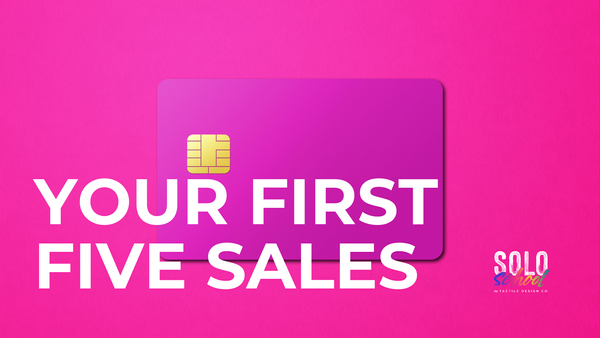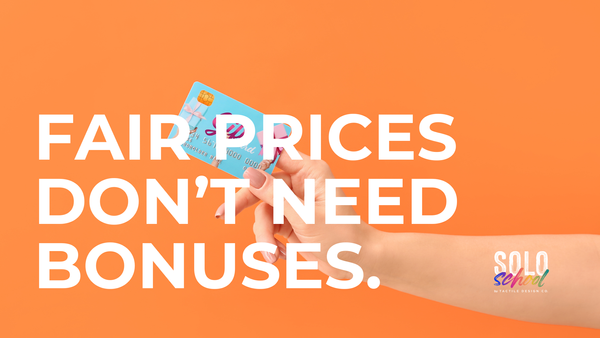So, you've completed the Ideation stage. You know what you're selling, who you're selling to, how much you're charging, and how you're going to deliver it.
Cool!
Now what?
The Validation stage is where we take your beautiful plan and test it against reality. It's where we turn "I think people will buy this" into "I know people will buy this because they already have."
How do we do this?
In Solo School, we teach this in five steps:
- Design your market research project and conduct research calls
- Create a sales conversation framework
- Build your client experience framework
- Circle back for your first five sales
- Develop feedback and iteration systems
By breaking it down into these steps, we gain an understanding of:
Whether your assumptions about your ideal clients are correct, and what their actual problems and priorities are.
How to have sales conversations that feel natural and helpful rather than pushy or awkward.
What your clients actually need from you during the delivery process, so you don't accidentally "ghost" them or leave them confused about next steps.
Whether your pricing, positioning, and delivery method actually work in practice, not just in theory.
How to systematically improve your offer based on real client feedback rather than your own assumptions or fears.
This gets you from "I hope this works" to "I know this works" in as little as 4-6 weeks, meaning you're ready to build systems and scale with confidence rather than crossing your fingers and hoping for the best.
Perhaps most importantly, it has you making your first revenue while you're still figuring things out, which is way more fun (and sustainable) than spending months perfecting something nobody wants.
Here's how we do it:
Design Your Market Research Project
Before you can sell something, you need to actually understand what people want to buy. And I'm not talking about sending out a Google Form and hoping for the best.
We're going to design a proper market research project where you have real conversations with real people about their real problems.
The goal here is to interview 20+ people who fit your ideal client profile. Not to sell to them (yet), but to understand:
- What problems are they actually dealing with day-to-day?
- How are they currently trying to solve these problems?
- What's not working about their current solutions?
- What would an ideal solution look like to them?
- How do they prefer to learn or get help?
In Solo School, we help you design interview questions that actually get useful information instead of polite responses. We show you how to find these people (hint: they're probably already in your network or one connection away), and how to position the research call so people want to help.
The magic happens when you stop trying to validate your idea and start trying to understand their reality. Suddenly, people open up about problems you never even considered, and you start seeing patterns across conversations that reshape your entire approach.
Here's a perfect example: Solo School exists specifically because what I wanted to do (sell info products on marketing and personal development) happened to line up with what people in our market research project said they actually wanted. They didn't want more marketing courses or productivity hacks – they wanted clients, consistency, and to not be forced to chronically live on social media to make their businesses work.
That insight completely changed our approach and led to the business model we have today. Without those research conversations, I would have built something totally different (and probably way less successful).
Create Your Sales Conversation Framework
Here's the thing about sales conversations: they're not supposed to be about convincing anyone of anything.
Instead, we're going to teach you how to have conversations where you ask questions until you find a problem, and then offer to book a sales call to discuss solving that problem for them.
This is completely different from the "pitch your thing and see who bites" approach that makes most of us want to hide under a rock.
Your conversation framework will include:
- How to transition naturally from relationship-building to problem-discovery
- Questions that help people articulate problems they might not have fully recognized
- How to listen for the difference between "nice to have" and "urgent need"
- When and how to suggest a follow-up sales conversation
- Scripts for booking that don't sound salesy or pushy
The goal is to have conversations where people feel heard and understood, and where you genuinely help them clarify their situation – whether or not they end up buying from you.
Because when you approach sales as problem-solving rather than persuasion, everything changes.
Build Your Client Experience Framework
Once someone says yes, what happens next?
This is where a lot of new business owners panic, because they've been so focused on getting the sale that they haven't thought through the actual client journey.
We're going to map out the entire experience from "Yes, I want to work with you!" through to "This was amazing, thanks!" and beyond.
Your client experience framework includes:
- What happens immediately after they purchase (welcome email, next steps, etc.)
- How you'll prepare for delivery (what you need from them, what they can expect from you)
- The actual delivery process (timeline, communication cadence, format)
- How you'll wrap up the project (final deliverables, feedback collection, future opportunities)
- Follow-up communication (checking in, referral requests, repeat purchase opportunities)
The goal is to create a simple but complete roadmap so you can focus on serving your clients rather than constantly wondering "what am I supposed to do next?"
Even if your framework is minimal to start, having it mapped out means you can create a todo list of when you need to communicate with clients, which prevents the accidental ghosting that happens when we get overwhelmed or distracted.
Circle Back for Your First Five Sales
Now comes the fun part: turning those market research conversations into actual revenue.
You're going to circle back with the people you interviewed and offer them the opportunity to work with you, based on what you learned from your conversations.
This isn't bait-and-switch. You genuinely conducted research, you genuinely learned from it, and now you have something that genuinely addresses what they told you they needed.
Here's how this works:
- Reach out to people whose problems align with what you're offering
- Reference specific things they shared in your research conversation
- Explain how you've refined your approach based on what you learned
- Invite them to a brief sales conversation to see if there's a fit
The goal is five sales from your 20+ research conversations. Not because that's the only way to get sales, but because it validates that your offer connects with real problems that real people are willing to pay to solve.
These first five sales teach you everything: whether your pricing works, whether your delivery process makes sense, whether you can actually do what you said you'd do, and whether clients get the results you promised.
Develop Feedback and Iteration Systems
Here's where most people mess up: they get their first few sales and then just... keep doing the same thing, hoping it continues to work.
Instead, we're going to build a systematic approach to collecting feedback and improving your offer based on actual client experiences.
Your feedback and iteration system includes:
- Mid-project check-ins to catch issues before they become problems
- Post-project feedback collection (what worked, what didn't, what was missing)
- Regular offer refinement based on patterns you notice across clients
- Documentation of what's working so you can do more of it
- Identification of what's not working so you can fix or eliminate it
This isn't about perfecting your offer before you sell it. It's about continuously improving your offer based on real data from real clients.
The goal is to develop a structured approach to refining your offer and getting it ready for prime time – meaning ready to scale, systematize, and repeat.
What Happens Next
Once you've completed these five steps, you'll have something most entrepreneurs never get: proof that your business model actually works.
You'll know that people will pay your prices for your solutions. You'll know how to find and convert clients. You'll know how to deliver results they value. And you'll know how to improve based on real feedback rather than your own assumptions.
This means you're ready to move on to the Repetition stage of your business, where we build systems and processes that let you serve more clients without working more hours.
Sometimes, you'll discover that your original idea needs significant changes based on what you learn during validation. That's not failure – that's smart business. Better to learn that after 20 conversations and 5 sales than after 6 months of building something nobody wants.
The validation stage is messy, uncertain, and sometimes uncomfortable. But it's also where the magic happens – where your idea transforms into a real business that solves real problems for real people.
Wish You Had Someone to Walk You Through It?
The validation stage is where a lot of entrepreneurs get stuck, because it requires putting yourself out there in ways that can feel vulnerable and uncertain.
That's why Solo School exists – to support people just like you in becoming successful founders and entrepreneurs, with step-by-step guidance that works with your natural tendencies instead of against them.
You can learn more about Solo School here.
If you're not ready for additional support yet, watch for next week's article on the repetition stage to learn how we help students systematize and prepare to scale their validated business models.




